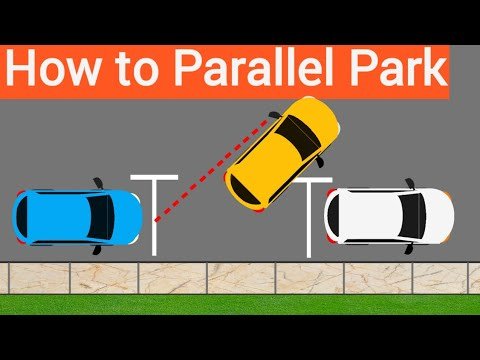Parallel parking is often considered one of the most daunting tasks for both new and experienced drivers. The mere thought of maneuvering a vehicle into a tight space between two cars, under the watchful eyes of waiting traffic, can send shivers down the spine of many. However, with a clear understanding of the steps involved and ample practice, parallel parking can become second nature. This guide aims to demystify the process, offering a step-by-step approach to mastering the art of parallel parking.
Understanding Parallel Parking
Parallel parking is a method of parking the vehicle in line with other parked vehicles, parallel to the curb, in a space between two parked cars. This parking technique is essential in city driving, where parking spaces are limited, and maximizing the use of curb space is crucial. Mastering this skill not only increases a driver’s confidence but also enhances their overall driving abilities.
Step-by-Step Guide to Parallel Parking
Step 1: Identify a Suitable Parking Space
The first step in parallel parking is to find a parking spot that is big enough for your vehicle. As a rule of thumb, the space should be at least one and a half times the length of your car. This extra room allows for the necessary adjustments during the parking process.
Step 2: Position Your Vehicle
Once you’ve identified a suitable spot, align your car parallel to the vehicle parked in front of the open space, ensuring there is about two to three feet of lateral space between the two vehicles. Your car’s rear bumper should be aligned with that of the parked vehicle.
Step 3: Reverse into the Space
Check your mirrors and over your shoulder for any oncoming traffic. Once clear, put your car in reverse, and slowly start backing up. As you move, turn your steering wheel all the way to the right (for parking on the right side of the road). Aim to angle the back of your car towards the rear corner of the space.
Step 4: Adjust Your Position
When your car reaches a 45-degree angle with the curb, start straightening the steering wheel while continuing to reverse. This maneuver will bring your vehicle parallel to the curb. Be mindful of the distance to the car behind you.
Step 5: Fine-Tune Your Position
Once parallel, if needed, adjust your position to center the vehicle in the parking space. Leave enough room both in front of and behind your car for other vehicles to maneuver.
Common Challenges and Solutions
Parallel parking can present a variety of challenges, particularly for those who are new to it. One common issue is misjudging the size of the parking space. To overcome this, practice estimating spaces in a low-traffic area or a parking lot. Another challenge is the fear of hitting the curb or the cars in front or behind. This can be mitigated by practicing in an empty space using cones or barriers as placeholders for other vehicles.
Tips for Perfecting Your Parallel Parking
- Practice in a Controlled Environment: Before attempting to parallel park in traffic, practice in a quiet area or a parking lot. This will help you get a feel for the maneuver without the pressure of other drivers waiting.
- Use Reference Points: Find reference points on your car (like the rear window or side mirrors) to help judge distances from the curb and other vehicles.
- Stay Calm: It’s important to remain calm and not rush. If you feel you’re not correctly aligned, don’t hesitate to pull out and start over.
- Check Your Surroundings: Always be aware of your surroundings, including other vehicles, pedestrians, and any possible obstacles.
Advancements in Parking Technology
In recent years, advancements in automotive technology have introduced features that assist with parallel parking. Many modern vehicles are equipped with parking sensors, rearview cameras, and even automated parking systems that can handle the task with minimal input from the driver. While these features can be incredibly helpful, it’s still important for drivers to understand and be capable of parallel parking without reliance on technology.
Conclusion
Parallel parking is a skill that, once mastered, can significantly ease the challenge of city driving. By breaking down the process into manageable steps and practicing regularly, drivers can overcome the intimidation often associated with this maneuver. Remember, patience and practice are key. With time, parallel parking will become a natural part of your driving repertoire, enhancing your confidence and competence on the road.









